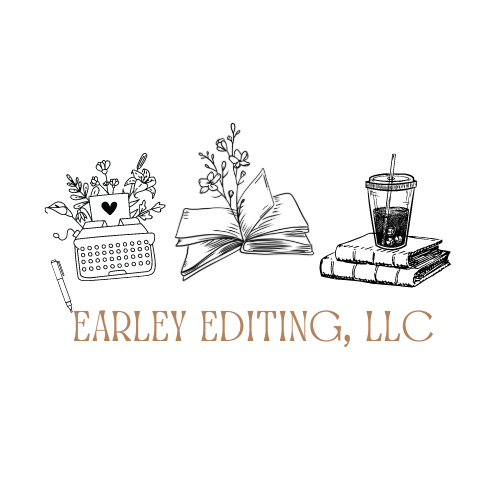Self-Publishing with Amazon vs. IngramSpark
IngramSpark and Amazon’s Kindle Direct Publishing (KDP) are two popular platforms that offer self-publishing services to authors. While both platforms provide opportunities to self-publish your book and make it available for sale, there are a few drastic differences between them:
Amazon/KDP
Kindle Direct Publishing is the most popular self-publishing platform. This has to do with Amazon having a dominant position in the eBook market with its KDP platform and being the seller for Kindles. When you publish an eBook through Amazon, it will be available for purchase on the Kindle Store. KDP’s primary distribution channel is its own online marketplace. KDP also offers marketing tools and programs that help authors promote their book(s) within the Amazon ecosystem, such as Kindle Unlimited, Kindle Countdown Deals, and Amazon Advertising.
Outside of this, while KDP offers expanded distribution options, it’s reach is rather limited. This is because Amazon is competing against other bookstores such as Barnes and Noble. Due to this compete for sales, Barnes and Noble is not going to sell KDP self-published books in their stores because they would be contributing to the competition with Amazon.
KDP has two options for eBook royalties: 35% and 70%. What is the difference between the two, you ask? Well, when you select the 70% royalty, you are agreeing to the following: you will pay for the delivery of the eBook, you will allow buyers to lend their eBook copy to others, your book won’t be public domain, and you must price you book between $2.99 and $9.99. So, if these terms don’t work for you, you are better off picking the 35% royalty option.
When it comes to printing options with KDP, they offer paperback and hardback options. Print royalties are less complicated. For paperbacks, the royalty rate is 60% of what your list price but your printing cost must be taken into account. For example, if you’re listing your book for $20.00 and it costs $10.00 to print, that is $10.00. Taking the 60% rate into account, your royalty rate would be $6.00 for every book sold. For hardback, the royalty rate is exactly the same.
Set pre-orders a year in advance (eBooks only).
Books are print-on-demand.
No upfront fees.
Templates for your book cover are provided.
Free ISBN from Amazon.
Real-time reports of your book sales.
Offers author copies with somewhat of a discount.
eBooks can be made available to readers worldwide on Kindle.
Kindle Unlimited sign-up, and while it sounds good to get paid by page reads, there are cons. The per page rate changes monthly, but it typically averages less than $0.01 per page. You also cannot have your eBook published or uploaded anywhere else, as you are signing a 90-day exclusivity deal with KDP. Thus, if your book is found on a piracy website, KDP still punishes its authors for violating this exclusivity deal.
Amazon is one of the most popular places to go to for books in the US and UK. Thus, it makes sense that KDP is the most popular self-publishing platform. KDP has its advantages, disadvantages, and frustrations, so it is important to do proper research before deciding to make this your book baby’s publication home.
IngramSpark
IngramSpark is known for “publishing wide.” This means they have an extensive distribution network that includes online retailers, brick-and-mortar bookstores, libraries, and academic institutions. Yes, this means they make your book available to retailers beyond the Ingram network. Your book can be made available to a wide range of retailers and libraries worldwide.
Until recently, IngramSpark used to enforce setup fees. As of May 2023, they no longer charge setup fees and allow free corrections to be made on titles up to 60 days after a title is made available.
Now, rather than a setup fee, they charge a market access fee to all books sold through Ingram’s Global Distribution network. To reach 40,000 bookstores, retailers, libraries, and schools, they charge 1% of the book’s list price. So, for example, if your book is listed for $20.00, the market access fee is $0.20.
Another necessary expense are ISBNs because, unlike KDP, IngramSpark does not provide them for you. This is due to their distribution being more extensive. However, on the other hand, IngramSpark allows you to determine the placement of your barcode when KDP doesn’t give you a choice.
Your books can be higher-quality through the variety of formats and cover types available with IngramSpark’s printed books.
In addition, Ingram’s royalties are not fixed. Due to their wide distribution, royalties vary on several factors from book format, distribution channel, wholesale order discount, and whether returns are allowed or not. It is the most complex royalty system of any publishing platform, but know that printing cost will bare the brunt of being your biggest hit to your royalties. The cost of printing will depend on print format, the option you chose for paper, trim size, page count, cover format, etc.
Set pre-orders a year in advance.
Flexibility in terms of print formats, paper options, and trim size.
Books are print-on-demand.
No upfront fees.
Offers author copies with a discount.
Can make books returnable.
Real-time reports of your book sales.
eBooks can be made available to readers worldwide.
When deciding whether to self-publish with IngramSpark or Amazon’s Kindle Direct Publishing, consider your publishing goals, target audience, and distribution preferences. If your focus is on wide distribution and availability in various retail channels, IngramSpark might be a better fit. If you prioritize leveraging KDP’s vast customer base and eBook market dominance, publishing through KDP may be a more suitable choice. Some authors even choose to use both platforms concurrently to maximize their book's exposure and availability.
